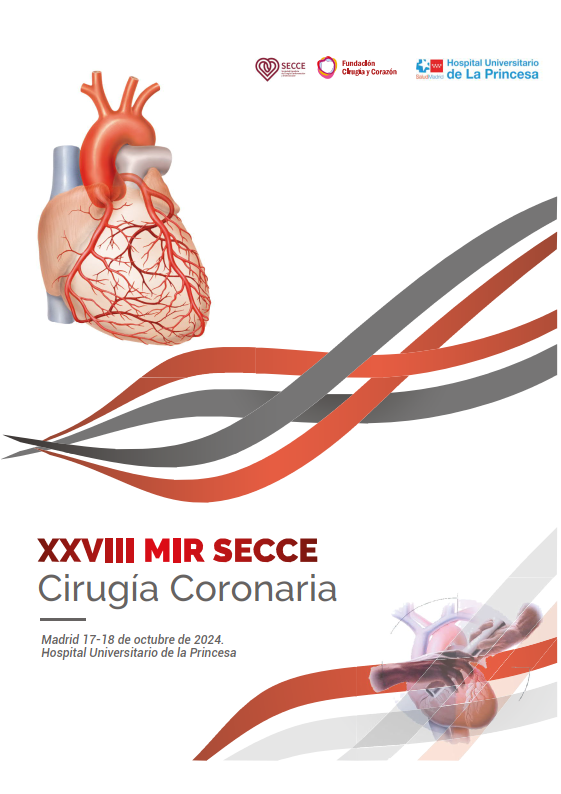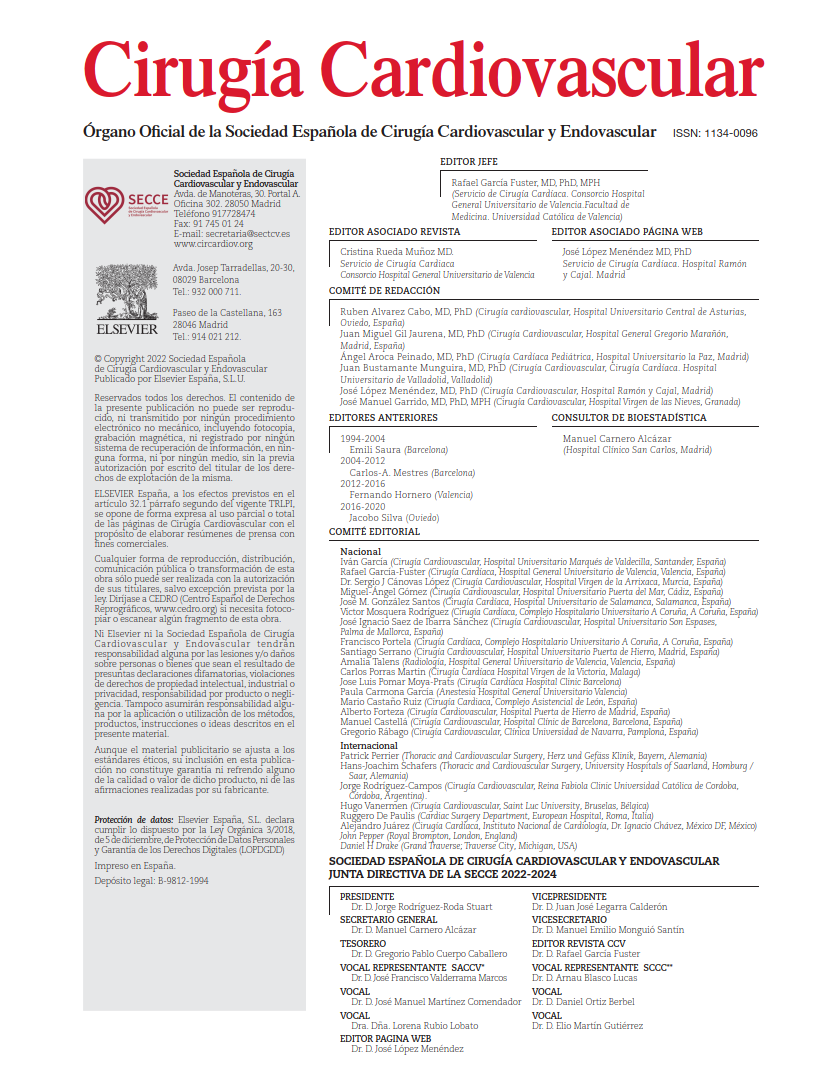Obstructive hypertrophic cardiomyopathy (oHCM) is a genetic and familial condition with variable clinical manifestations and disease progression. It is defined by the presence of left ventricular hypertrophy in the absence of other causes such as aortic stenosis or sustained systemic hypertension. Despite its morphological heterogeneity—ranging from basal to midventricular, apical, or diffuse patterns—the predominant prognostic determinant is the presence of left ventricular outflow tract (LVOT) obstruction. This explains why both pharmacological and surgical treatment strategies focus primarily on gradient relief.
The standard of care for patients with LVOT gradients >50 mmHg (at rest or with provocation) who remain symptomatic despite optimal medical therapy is extended septal myectomy (SM). Alcohol septal ablation (ASA) is generally reserved for individuals deemed high-risk for surgery (e.g., advanced age, frailty, significant comorbidities). Following either intervention, only a small subset of patients develop residual gradients or refractory symptoms, potentially requiring repeat SM. Given the limited literature addressing this scenario, the authors sought to evaluate outcomes in this specific population.
The study retrospectively analyzed the outcomes of patients undergoing SM after previous septal reduction therapy (SRT) (72 ASA vs 73 SM) who continued to exhibit significant LVOT gradients. A total of 145 patients were included, all treated between January 1989 and March 2022. Patients undergoing more than one prior SRT, failed ASA (e.g., absence of a suitable septal branch), or prior isolated transapical SM were excluded. The analysis included categorical variables and echocardiographic parameters, followed by logistic regression and survival analysis.
At baseline, notable differences emerged between groups. Patients with prior ASA were more frequently male (50.0% vs 30.1%; p = .015), older (57.5 vs 48.3 years; p < .001), and had higher body mass index (32.7 vs 30.0 kg/m²; p = .011). They also presented higher rates of hypertension, diabetes mellitus, and atrial fibrillation, and more frequently received calcium-channel blockers. Preoperative echocardiographic data (LVOT gradients, maximal septal thickness, and left ventricular ejection fraction) were comparable between groups. In 56% of cases, the main mechanism of residual obstruction was an insufficient length of septal resection toward the apex.
Regarding the outcomes reported, the median interval between initial ASA and subsequent SM was 2.0 years, while the interval between the first and second SM was 2.7 years (p = .09). All patients underwent transaortic SM. A transapical approach was added in 4 patients (5.6%) in the prior ASA group and in 14 (19.2%) in the prior SM group. Concomitant valve surgery was more frequent among patients with prior SM (12.3% vs 4.2%; p = .074). In this group, 3 mitral valve repairs, 1 mitral valve replacement, 2 redo mitral repairs, and 2 tricuspid valve repairs were performed. In the prior ASA group, 2 patients underwent mitral valve repair. In both groups, one unplanned aortic valve repair was required due to leaflet injury during SM.
With respect to LVOT gradients, 93.1% of patients in the prior ASA group showed a reduction from 84 mmHg to 3 mmHg (p < .001), while 93.2% of those in the prior SM group experienced a decrease from 83 mmHg to 2 mmHg (p < .001). As for conduction disturbances, complete atrioventricular block (CHB) was observed in 6 patients (8.3%) in the prior ASA group, all of whom received a permanent pacemaker or implantable cardioverter-defibrillator (PPM/ICD). In the prior SM group, 2 patients (2.7%) developed CHB, and 4 (5.5%) received a PPM/ICD. The latter included 2 additional patients who experienced ventricular tachycardia or fibrillation in the postoperative period.
Five- and 10-year survival rates were 93.2% and 80.7% in the prior ASA group and 100% and 91.4% in the prior SM group, respectively.
COMMENTARY:
This study offers several noteworthy insights into the management of oHCM. In an era where cardiologists increasingly favor less invasive strategies—such as medical therapy or ASA—surgical intervention remains the gold standard for symptomatic patients despite optimal pharmacological management. The technique of SM became widely adopted in the 1980s after the Mayo Clinic demonstrated its ability to achieve near-zero LVOT gradients with surgical mortality below 1% and long-term survival comparable to the general population. These outcomes have proven reproducible in high-volume centers with expertise in oHCM, often referred to as “centers of excellence,” typically defined as performing at least 10 SM procedures annually. Still, this definition can be misleading, as fewer than 60% of SM-performing centers in the United States meet this volume threshold. In Spain, only a handful of institutions possess substantial experience in both the medical and surgical treatment of oHCM, yet results from these centers are consistent with the large series of over 3500 SM cases reported by the Mayo Clinic.
Regarding recurrent LVOT gradients, the authors reinforce their hypothesis that inadequate resection—either in length or depth—is a leading cause following prior SM. This is supported by their observation that the transapical approach was more frequently required in patients with previous SM (19.2%) than those with previous ASA (5.6%). To mitigate residual gradients, both the Mayo Clinic and the Cleveland Clinic advocate for intraoperative provocation testing to elicit gradients after the initial resection. If such provoked gradients are identified, the surgeon can perform additional septal excision within the same procedure. In our own institution, provocation maneuvers have led to re-clamping of the aorta for extended resection in 15% of patients, reducing the need for reintervention to 1.86%.
Another notable finding is the incidence of conduction disturbances following repeat SM. The literature describes a tendency toward right bundle branch block (RBBB) after SM and left bundle branch block (LBBB) after ASA. Consequently, patients who develop conduction abnormalities after one procedure (ASA or SM) face a higher risk of complete heart block when undergoing a second intervention—reported rates range from 34% to 100%, depending on the series. The Mayo Clinic attributes their lower rate of CHB (23%) in patients with pre-existing RBBB undergoing SM as a second procedure to their modified technique of initiating the septal incision at a more counterclockwise position, thereby sparing left-sided conduction tissue. Since pacemaker implantation negatively impacts long-term survival in patients with oHCM, emphasis on surgical strategies that minimize the risk of CHB remains paramount.
Yet, despite these favorable results, one must acknowledge the study’s limitation as a single-center experience from an institution with exceptionally high surgical volume. It may seem difficult to replicate these outcomes elsewhere, particularly in second procedures. Still, the standardization of SM in the 1980s demonstrated that high-level results can eventually be reproduced broadly. Perhaps, a second SM is not as discouraging as we once thought.
REFERENCE:
Qamar Y, Schaff HV, Castro-Varela A, Cui H, Dearani JA. Outcomes of surgical septal myectomy for obstructive hypertrophic cardiomyopathy after previous septal reduction therapy. J Thorac Cardiovasc Surg. 2025 May;169(5):1483-1490.e1. doi: 10.1016/j.jtcvs.2024.05.002.



